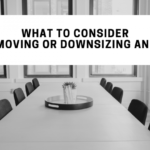One of the most frustrating situations that can occur during a big move is finding that you simply do not have enough money saved to make the process as smooth as possible. Moving is stressful enough as it is, but the potential for going into debt afterward can make this task especially daunting.
When it comes to making sure you’re prepared, one of the most effective ways to avoid these financial pitfalls is by planning far in advance and crafting a budget. A budget helps you set expectations with yourself, be realistic with your finances, and prevent excessive overspending. Here are a few great tips to help you create the perfect budgeting strategy for your next big move.
- Determine your costs
Before you start budgeting, you will first need to know how much your move is going to cost you. To get an idea, speak to the moving services you’ll be working with, and ask about the rates they usually charge. Go into detail about how far you plan to move, how much you’re going to move, and all other factors that need to be taken into consideration, as this will help them provide a better estimate.
You should also check in with your friends who have recently moved. Their experience is valuable, and they should be able to give a rough estimate of how much you’re going to need to have set aside to be fully prepared.
- Create a sinking fund
Now that you know what you’re expecting to spend on the move, you can start preparing for it. The earlier you start, the easier it will be to put aside a small amount of money each paycheck towards your move. This type of savings is known as a sinking fund, where you save towards a future goal that you know you’ll need to spend money on. You also know exactly how much you’ll need to be saving for this fund, which can be helpful, as having a specific savings goal is much more attainable than a vague one.
As mentioned before, starting earlier can make this journey easier. If you need to save $1000 by the end of the year, and you start in January, you will only need to put aside $83 a month. However, if you wait until mid-year to start saving, you’ll need to be putting aside $166 a month. To help make the saving process as simple, and easy to manage as possible, use helpful savings tools, such as a digital banking platform, to automate the savings process and help you reach your goals as easily as possible.
- Expect the unexpected
Once you’ve determined your costs and have properly saved for them, remember that these are only the expected expenses that can come with a move. Unfortunately, the worst costs are the ones that are hard to prepare for. These are the unexpected costs of a move, which can occur at any time, and can set you back hundreds or thousands of dollars.
While creating your budget, determine a set amount for an “unexpected costs” section of your budget. This should be enough to perform an emergency car repair, rent a hotel for a night if you get stranded, and have a bit extra for food and gas. Once you determine this amount, put that much aside into an emergency fund, which you should not draw from unless absolutely necessary.
- Budget for individual expenses
Finally, now that you’ve gotten a general idea of your expenses, separate everything by category, and how much each will cost you. Doing this can help prevent you from overspending on certain categories while neglecting others. To make this strategy extra effective, list your budget in order of priority.
Listed below is an example of what a budget like this might look like. Take into consideration all major factors about your move, such as distance and travel costs in your area. If some of your expenses are estimates, always plan to budget a bit more than the estimate you’re given, in case it ends up costing more.
| Service | Budget | Actual Spending |
| Moving Services | $1000 (Estimate) | |
| Gas | $200 | |
| Food | $200 | |
| Hotels | $300 | |
| Unexpected Costs | $500 | |
| Total | $2200 |
As you start the moving process, mark down how much you’ve spent in the righthand section of the budgeting worksheet. This will allow you to determine if you’re over budget in certain categories, and gives you room to cut back where necessary. Remember not to draw from set payments, such as the moving services cost, as these prices cannot be brought down.
Creating a proper budget plan can often seem like a tedious task to take on. But, by spending a few hours to sit down and work on one, you’ll be much better suited to take on your big move, and it will end up saving you lots of money in the long run.






